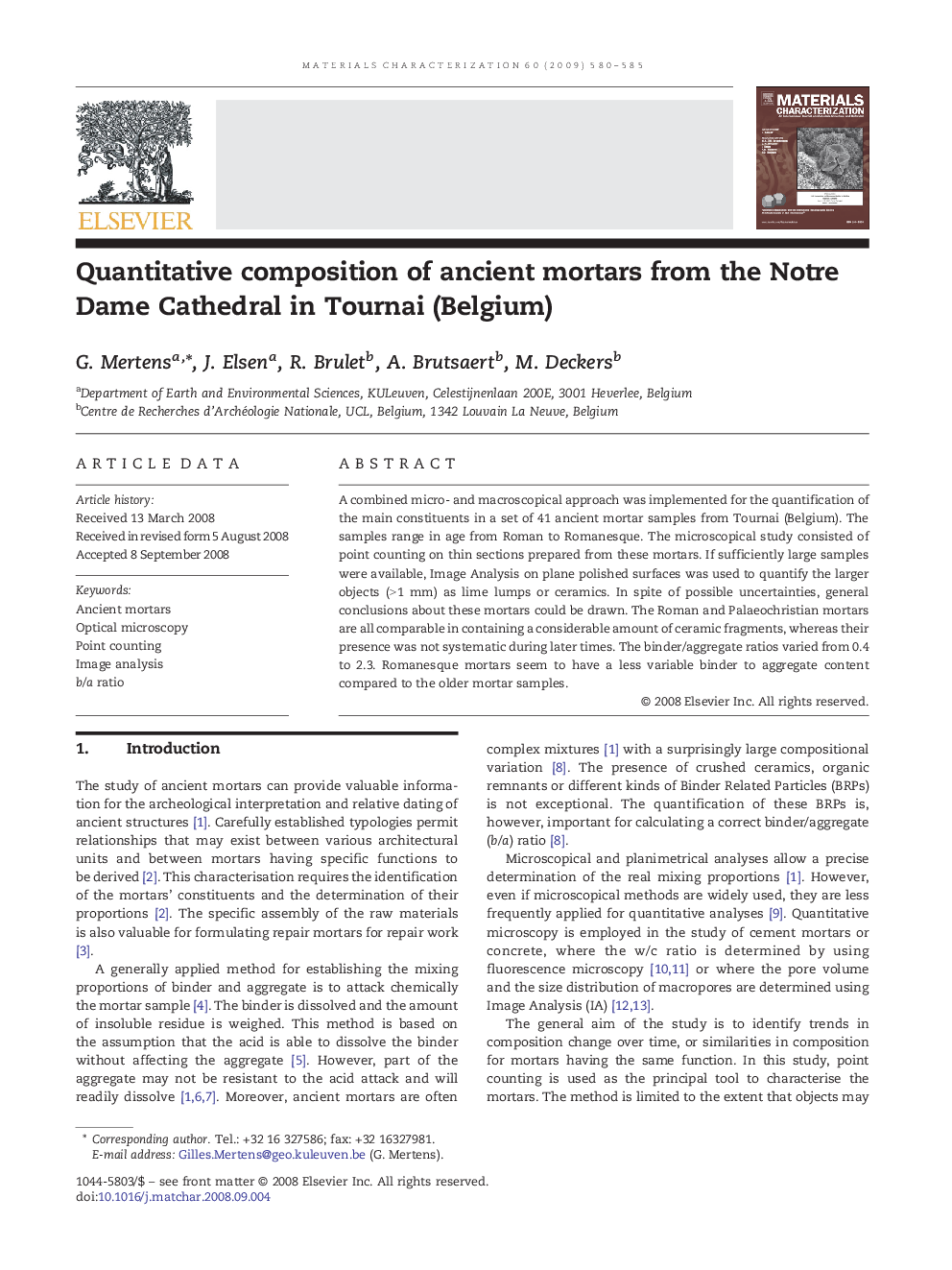| Article ID | Journal | Published Year | Pages | File Type |
|---|---|---|---|---|
| 1572143 | Materials Characterization | 2009 | 6 Pages |
A combined micro- and macroscopical approach was implemented for the quantification of the main constituents in a set of 41 ancient mortar samples from Tournai (Belgium). The samples range in age from Roman to Romanesque. The microscopical study consisted of point counting on thin sections prepared from these mortars. If sufficiently large samples were available, Image Analysis on plane polished surfaces was used to quantify the larger objects (> 1 mm) as lime lumps or ceramics. In spite of possible uncertainties, general conclusions about these mortars could be drawn. The Roman and Palaeochristian mortars are all comparable in containing a considerable amount of ceramic fragments, whereas their presence was not systematic during later times. The binder/aggregate ratios varied from 0.4 to 2.3. Romanesque mortars seem to have a less variable binder to aggregate content compared to the older mortar samples.
